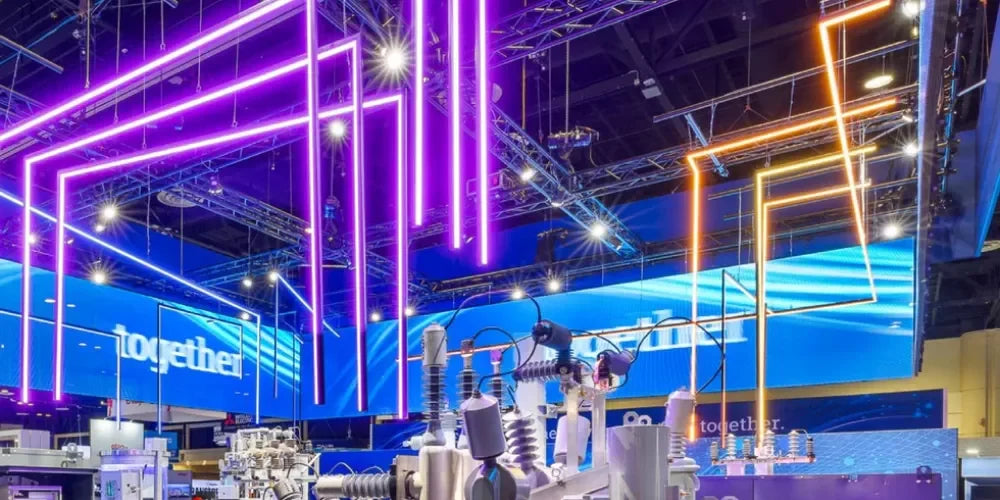LED strip lights offer incredible versatility, but installing them bare can lead to harsh glare, visible dots, and potential damage. The solution? An LED channel. This essential accessory not only provides a professional, finished look but also protects your investment and enhances light quality.
This guide will walk you through everything you need to know about LED channels, also known as aluminum extrusions or profiles. We'll explore the benefits, different types, and key factors to consider, empowering you to select the perfect channel for any project.
What is an LED Channel?
An LED channel is a dedicated housing, typically made of aluminum, designed to encase an LED strip light. It consists of two main parts: the aluminum channel itself, which acts as a heatsink and mounting base, and a diffuser cover (often polycarbonate) that snaps or slides into place to soften and spread the light.

Why You Need an LED Channel: 4 Key Benefits
Using a channel is more than just an aesthetic choice; it's critical for performance and longevity.
- Protection and Durability: Channels shield fragile LED strips from dust, moisture, and physical impact. This is crucial for installations in high-traffic areas, kitchens, bathrooms, or outdoors.
- Superior Heat Dissipation: Heat is the primary enemy of LEDs. The aluminum body acts as a heat sink, drawing thermal energy away from the LED chips. This prevents overheating, preserves light quality, and significantly extends the lifespan of your strip.
- Flawless Light Diffusion: The diffuser cover eliminates the "hotspots" or visible dots common with bare LED strips. It creates a smooth, uniform line of light, perfect for direct-view applications where a clean, professional look is desired.
- Enhanced Aesthetics: Channels conceal the LED strip and wiring, transforming a DIY project into a high-end, architectural lighting feature. They provide a sleek, finished appearance that integrates seamlessly into any design.
Types of LED Channels and Their Applications
LED channels come in various shapes and mounting styles to suit different installation needs.
Surface-Mounted Channels
This is the most common and versatile type. These channels are easy to install directly onto any flat surface like walls, ceilings, or under cabinets using mounting clips or screws. They are ideal for task lighting, accent lighting, and general illumination where the fixture will be visible.

Shop Surface Mount LED Channels ►
Recessed Channels
For a completely seamless and integrated look, recessed channels are installed flush within a surface. They require a groove to be cut into the material (like drywall, wood, or tile), making them perfect for modern, minimalist designs in floors, walls, and ceilings.

Corner Channels
Designed with an angled profile (typically 45°), corner channels fit perfectly into 90-degree corners. They are excellent for directing light outwards into a room from the intersection of a wall and ceiling, inside cabinets, or in display cases.

Specialty Channels
Beyond the standard types, you can find specialty profiles for specific needs:
- Round/Pendant Channels: Can be used to create custom suspended light fixtures.
- Walkover/Drivable Channels: Reinforced for in-floor installations in high-traffic areas.
- Waterproof Channels: Feature enhanced sealing for outdoor or wet location use.
How to Choose the Right LED Channel
Selecting the best channel depends on a few key factors.
- Installation Location: Will it be surface-mounted, recessed, or in a corner? Is it indoors or outdoors? This is the first decision to make.
- LED Strip Width: Ensure the channel's internal width is compatible with your LED strip. A strip that is too wide won't fit, and one that is too narrow may not dissipate heat effectively.
-
Desired Light Effect (Diffuser Type):
- Frosted/Opal: Offers the best diffusion and eliminates hotspots, creating the smoothest line of light.
- Clear: Provides maximum light output but offers minimal diffusion and protection. Best used for indirect lighting.
- Channel Depth: Deeper channels create more distance between the LED strip and the diffuser, resulting in better light mixing and fewer visible dots, even with lower-density LED strips.

Real-World Applications
LED channels can elevate lighting in any environment:
- Residential: Perfect for under-cabinet kitchen lighting, cove lighting in living rooms, accent lighting in shelving, and creating ambient light in bedrooms.
- Commercial: Ideal for retail displays, office task lighting, restaurant and bar ambiance, and architectural highlights in lobbies.
- Facility Management: Upgrading to a durable, low-maintenance system with LED channels reduces energy costs and replacement frequency in large facilities.
Choosing the right LED channel is a critical step in any successful LED strip light installation. It elevates the project from a simple light source to a sophisticated and durable lighting feature. By protecting the strip, managing heat, and diffusing the light, an aluminum channel ensures you get the best performance, longest lifespan, and a flawless aesthetic.
Ready to get started? Explore the wide selection of high-quality aluminum LED channels at Bees Lighting to find the perfect solution for your next project.





